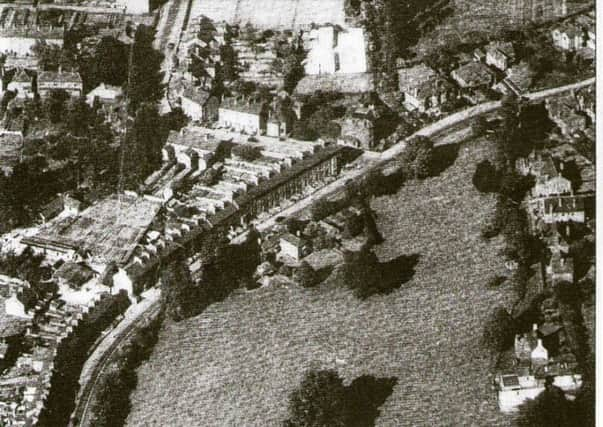Look Back With Little: Terrace tales at heart of Banbury's Victorian legacy


In its most spectacular form it parallels the Broughton Road between the Bath Road junction and the premises known as Woodgreen, which was home to the Gillett family of country banking fame.
Here as in several other parts of the town, house building was a speculative activity involving local builders some of whom worked for the Gilletts and some of whom controlled clay extraction pits and brickworks often in close proximity to where they were intending to build.
Advertisement
Hide AdAdvertisement
Hide AdThe sections of the Broughton Road houses were given different names: these were Broughton Terrace, Constitution Terrace and Constitution Row. A few properties built on the site of former clay workings behind the latter were known as Iris Cottages. Can any of my readers explain why?
Building started in the 1830s and was further extended in the 1840s. Valuable details about how Constitution Row came about appear in George Herbert’s Shoemaker’s Window recollections of Banbury before the railway age. He states that the houses up Constitution Hill as far as Woodgreen were built by Joseph Garrett who was a large builder at the time. Garrett had a large brickyard behind Constitution Row.
A trawl of the Census returns for 1851 and 1861 reveals that the cottages came to be occupied by people of the artisan class. James Hawtin was a carpenter, Francis Webb a brickmaker, William Grant a cutler and whitesmith and John Teal a horse nail maker. There were also a number of laundresses, perhaps attracted by the springs in the area that would provide a ready supply of water.
Herbert also comments on a brick built cottage lower down on the other side of the road kept by a father and son called How which served as a pest house where smallpox victims could be housed in isolation. Nearby a post mill had formerly stood.
Advertisement
Hide AdAdvertisement
Hide AdHerbert goes on to explain that a footpath still in existence ran at the at the rear of the new houses erected by Mr Davis collectively known as Broughton Terrace and terminating at the back of the public house below Mr Garrett’s buildings.
Here was a classic location for a beerhouse where many a jug would have been filled for home consumption. In Rusher’s Directories the first entry for a beerhouse on Constitution Row is in 1869 when J. Whing was landlord. Messrs Blencowe and Co owned it until 1940 when it was taken over by Banbury brewers Hunt Edmunds.
In his book’ Victorian Banbury’ Barrie Trinder has some interesting observations on the building materials used especially for the working class cottages on Constitution Hill. Front walls were of fashionable brick whereas the backs had a stone finish. Fewer people saw the latter so cheaper materials were used.
In April 1950 the Town Clerk Owen Reid wrote to occupants of Broughton Road properties. This letter had two purposes: firstly to inform them that all addresses would be known by the name of the road and secondly to draw attention to an area of allotments at the rear of all the houses.
Advertisement
Hide AdAdvertisement
Hide AdA delightful aspect of Shoemaker’s Window is the way the reminiscences are interspersed with anecdotes concerning himself as boy which throw a lot of light on a very different set of values. In the section on the Broughton Road we learn of an escapade involving the perils of egg collecting from sandpits on Constitution Hill. Another story concerned house sparrows nesting in the thatch of two nearby cottages. The lads borrowed a ladder from a builder’s yard. Their activities were spotted by a householder who called out ’Nance bring the pistol!’. They made good their escape leaving the ladder on a hedge. Sparrows heads were highly prized as they fetched 6d per dozen. These were destined for Mr Stevens of Easington Farm,a Church Warden.
*I am grateful to Stuart Ramm for the loan of relevant documents.